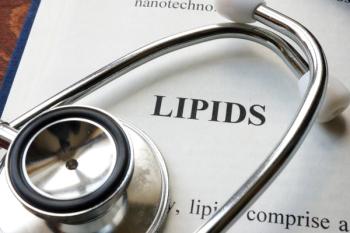
Red flags in pediatric practice
The sudden cardiac arrest of Buffalo Bills safety Damar Hamlin on January 2 shocked the public, but the condition believed to have triggered his collapse is one that is more common in young athletes than any other group.
The sudden cardiac arrest of Buffalo Bills safety Damar Hamlin, 24, on January 2 shocked the public, but the condition believed to have triggered his collapse is one that is more common in young athletes than any other group.
Although there have been no official statements on the exact cause of Hamlin’s sudden cardiac arrest (SCA) after taking a hit in the January 2 football game, many are speculating that commotio cordis is to blame.1,2,3
Commotio cordis is a condition that develops when blunt force to the chest wall leads to a disruption in the heart’s normal rhythm. The impact of the blow at a specific time in the cardiac cycle can disrupt the normal electrical signals in the heart and trigger arrhythmias like atrial or ventricular fibrillation.4,5
While this phenomenon can really develop in anyone, it’s most common in young competitive athletes. About 95% of cases of commotio cordis happens in adolescent males, according to a report in Circulation, and the mean age at the time of SCA was 14.5 years.
Studies have found that an impact equivalent to around 40 mph of force that strikes directly perpendicular over the left chest wall can trigger commotio cordis.5
The collapse of the athlete can happen instantaneously, but the effects of the blow can also appear as long as 24 hours after a hit. Immediate resuscitation efforts with cardiopulmonary resuscitation and defibrillation are key to managing this condition, improving survival rates following commotion cordis from about 15% in 2002 to more than 50% today. Increased awareness, and improved availability of automated external defibrillators in the community have been credited for these improved survival rates.5
Although this condition often develops in young athletes with no previously known cardiac history, the American Academy of Pediatrics released guidance in 2021 to help pediatricians recognize patients who may be at risk of commotio cordis.6
Multiple conditions can contribute to an increased risk of sudden cardiac arrest, and primary care providers and pediatricians should refer any young athletes with known risk factors to a pediatric cardiologist or electrophysiologist for further evaluation and management.
Some conditions that are believed to increase the risk of developing commotio cordis include:6
· Cardiomyopathies
· Channelopathies
· Congenital heart diseases
· Wolff-Parkinson-White syndrome
· Anomalous coronary arteries
· Aortopathies
Regular wellness exams may uncover some of these issues, but the American Heart Association recommends a 14-point history and physical screening for young athletes.
Assessments of personal and family history include:6
· A history of chest pain, tightness, or discomfort during exertion
· Unexplained syncope or near-syncope
· Excessive shortness of breath, fatigue, or palpitations with exercise
· Prior diagnosis of a heart murmur
· Elevated blood pressure
· Prior restrictions for sports participation
· Previous cardiac testing
· A family history or sudden or unexpected premature death
· Disability from heart disease in close relatives under 50 years of age
· A family history of hypertrophic or dilated cardiomyopathy, clinically significant arrhythmias, genetic cardiac conditions, long QT syndrome, Marfan syndrome, or other ion channelopathies
Physical assessments are also part of the screening and include examination of:6
· Any heart murmurs
· Femoral pulse strength
· Indications of Marfan syndrome
· Brachial artery blood pressure
Patients whose screenings generate any concern should undergo additional evaluations, including an electrocardiogram, the guidance states.
References
1. Buffalo General releases latest update on Damar Hamlin. Buffalo Bills. January 10, 2023. Accessed on January 16, 2023. https://www.buffalobills.com/news/buffalo-general-releases-latest-update-on-damar-hamlin
2. Commotio cordis in athletes. The Sports Medicine Review. January 8, 2023. Accessed January 15, 2023. https://www.sportsmedreview.com/blog/commotio-cordis-athletes/
3. Understanding cardiac arrest and emergency response following Damar Hamlin’s collapse during Monday Night Football. American Heart Association. January 3, 2023. Accessed on January 10, 2023. https://newsroom.heart.org/news/understanding-cardiac-arrest-and-emergency-response-following-damar-hamlins-collapse-during-monday-night-football#:~:text=Commotio%20cordis%20is%20a%20rare,absence%20of%20apparent%20cardiac%20damage
4. Ota K, Bratincsak A. Atrial fibrillation induced by commotio cordis secondary to a blunt chest trauma in a teenage boy. Pediatrics. 2015;135(1):e199-e201. doi:10.1542/peds.2014-1972
5. Link MS, et al. Eligibility and disqualification recommendations for competitive athletes with cardiovascular abnormalities: Task force 13: Commotio cordis. Circulation. 2015;132(22):e339-e342. doi:10.1161/CIR.0000000000000249
6. Erickson CC, et al. Sudden death in the young: Information for the primary care provider. Pediatrics. 2021;148(1):e2021052044. doi:10.1542/peds.2021-052044
Newsletter
Access practical, evidence-based guidance to support better care for our youngest patients. Join our email list for the latest clinical updates.








